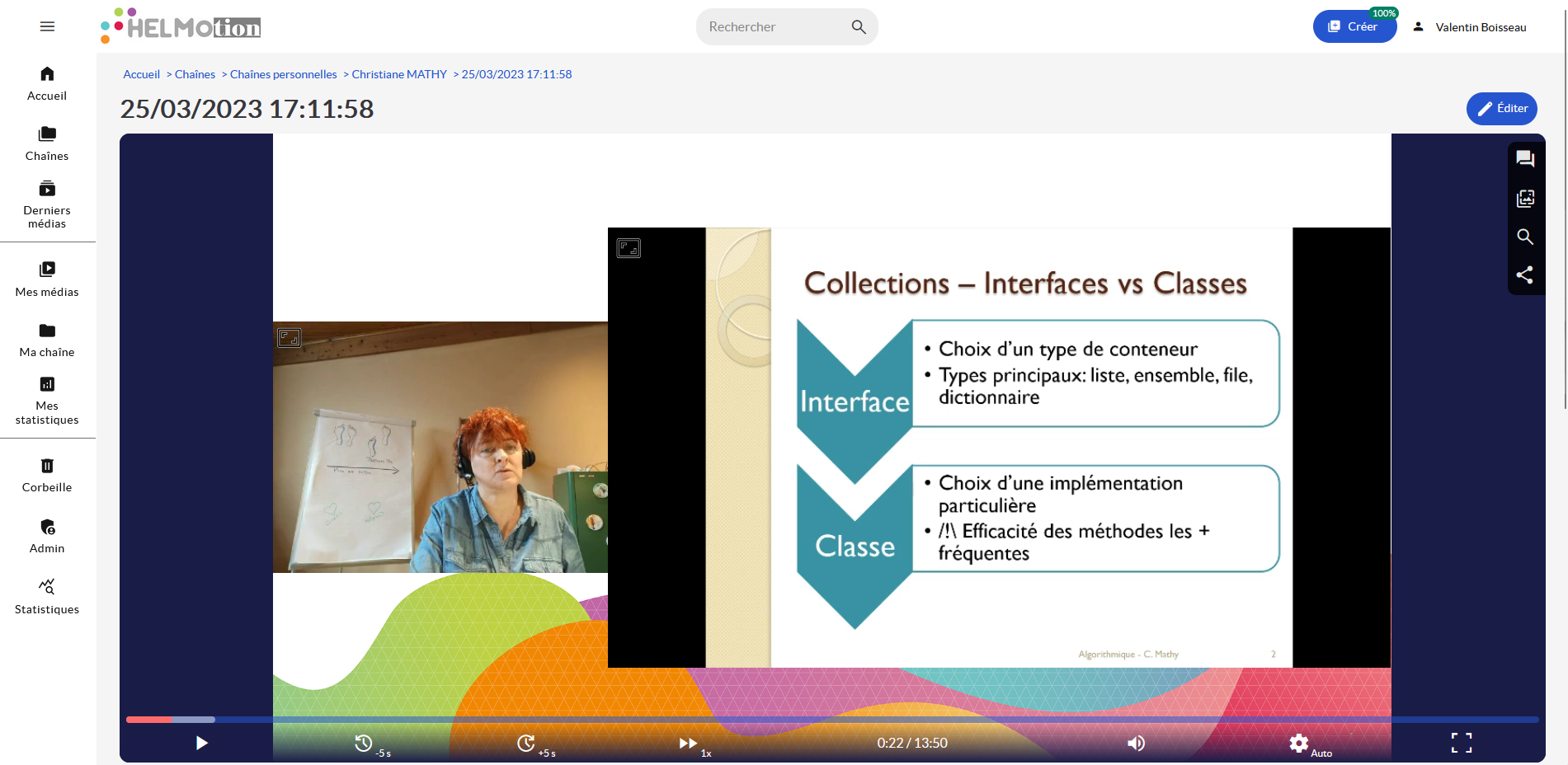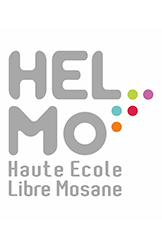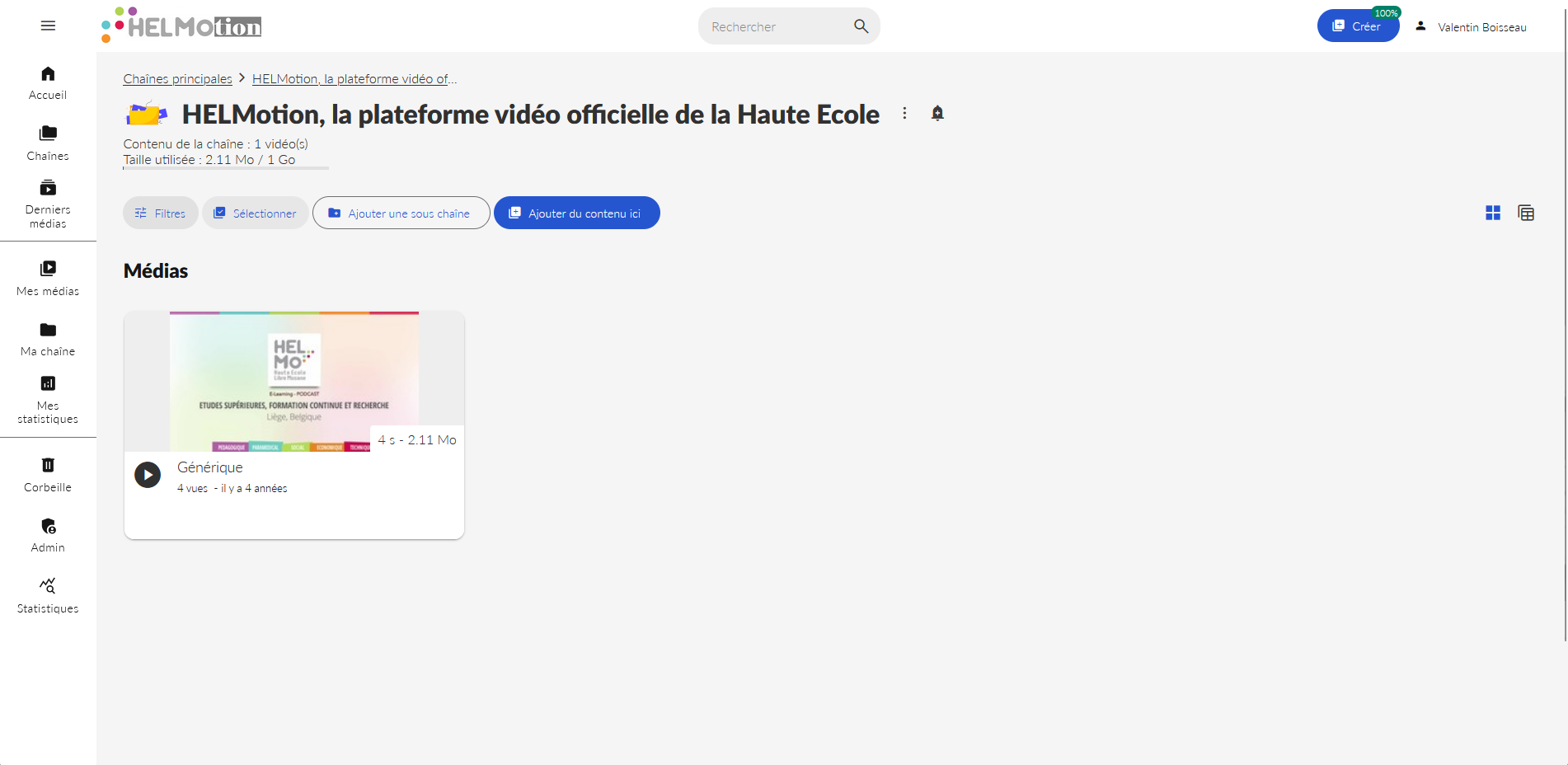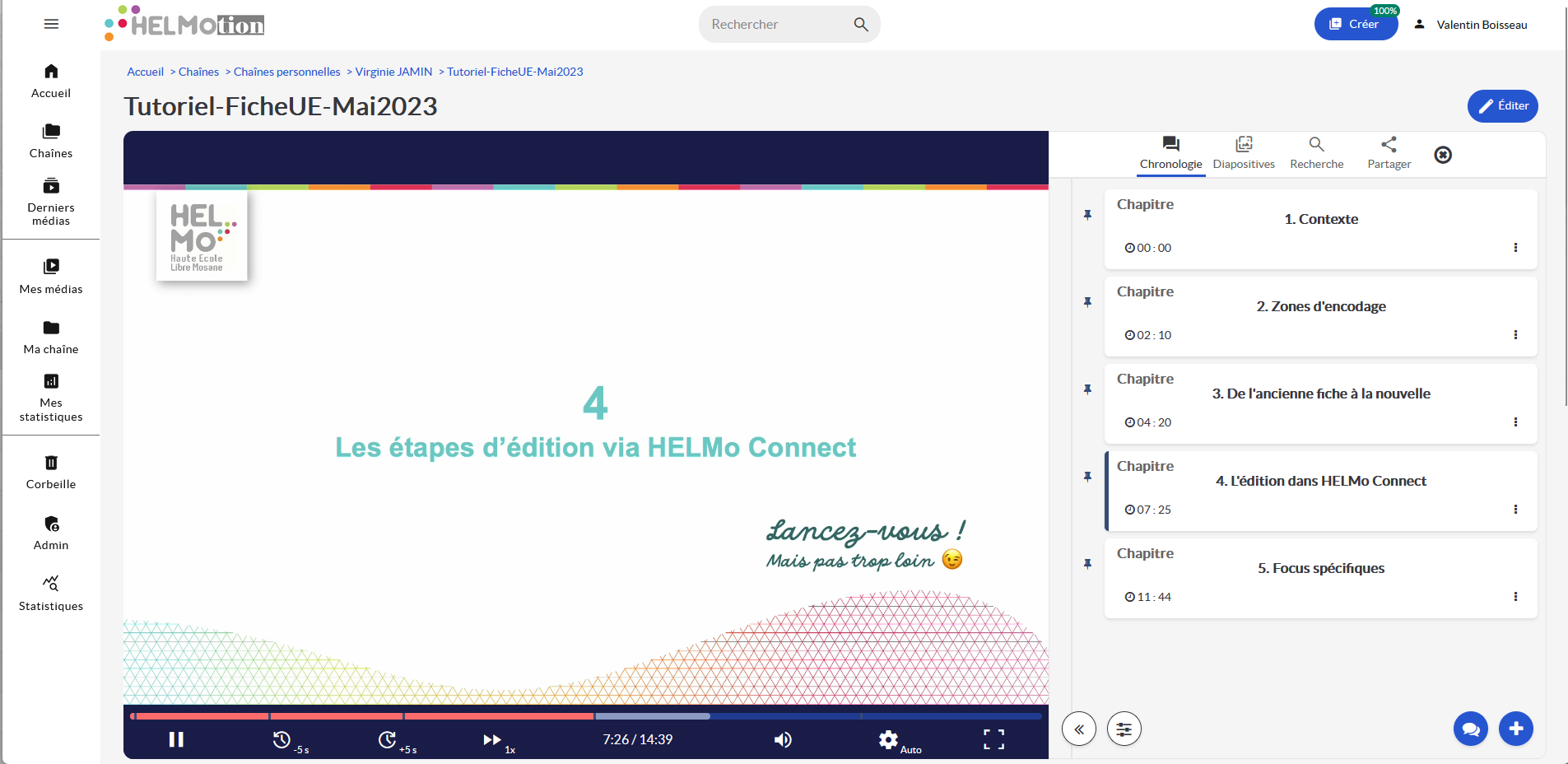The first steps towards the adoption of educational videos
“The Belgian context helped accelerate the shift towards adopting short educational videos at HELMo, particularly with the publication of a decree in Belgium rendering the publication of course materials online mandatory. This allowed our teams to discover the use of learning platforms. This was followed by an increase and diversification in usage, and then a growing need to make syllabi more interactive, but also to be able to showcase certain professional gestures.” explains Izida Khamidoullina, head of the e-learning department.
Subsequently, a reform of higher education came to further establish educational practices focused on the adoption of technological tools. “This was the moment when we began to consider implementing educational videos in the Haute École. We then provided each department with a backpack containing cameras and microphones, then we hired a technical-educator and created a study group with teachers in order to conduct this experiment.” The results ? “We noticed that videos were very useful for students struggling to keep up with their studies, or to catch up with some classes they might have missed. It already was a real tool to encourage their academic success!”
Then the Covid-19 health crisis hit… And while this event could have slowed down the start of HELMo’s momentum, it actually put into light more creative and spontaneous uses of educational videos. “This situation led us to consider an institutional solution that would be available to all, and that is how we began our journey with UbiCast.”

For Izida, the decision to rely on UbiCast’s Nudgis platform can be justified by the possibility to “easily record high-quality educational videos, having multiple capture sources (video, audio), to centralise media on a single private platform, and first and foremost to provide access to their content directly from Moodle.”





